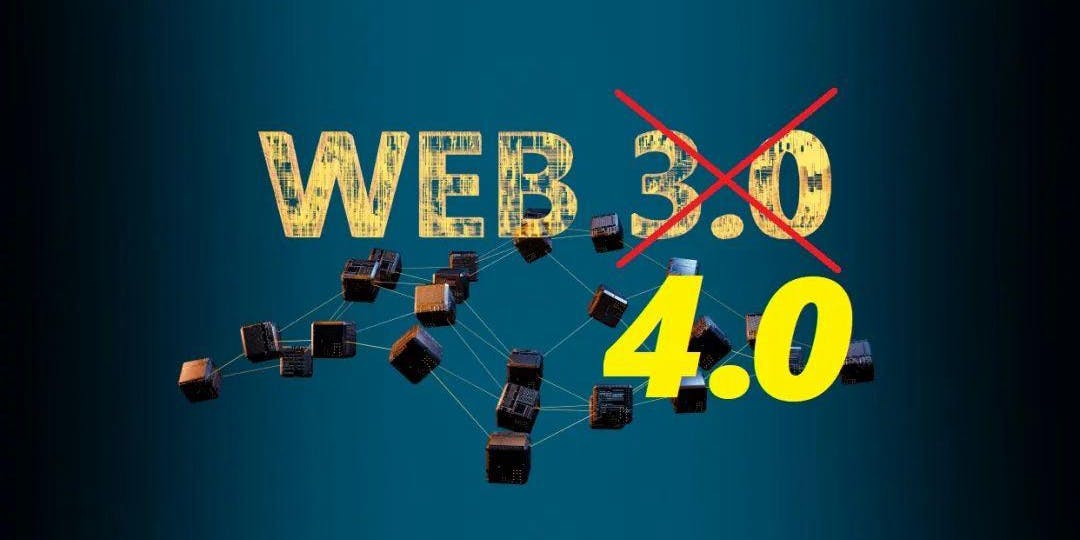
How to Use Sentiment Analysis to Understand the Direction and Opportunities of the Cryptocurrency World
Market sentiment is an assessment of traders' attitudes and emotions, which can affect their investment decisions, especially in the highly volatile cryptocurrency market, where market sentiment may experience short-term intense fluctuations. The fluctuation of market sentiment often signifies new opportunities or new pressures and risks. If you do not understand sentiment analysis in cryptocurrencies, then this article is suitable for you.
This article will introduce you to sentiment analysis in the cryptocurrency world and classic sentiment analysis indicators, as well as share several related practical tools to help you scientifically understand cryptocurrency market sentiment and more accurately grasp token price movements.
What is Sentiment Analysis?
In the financial environment, "sentiment" refers to the perception and feedback of the market situation. Cryptocurrency market sentiment describes investors' reactions and attitudes towards macro market prices, and also reflects the psychology of the people involved in cryptocurrency trading and development.
In a popular sense, sentiment analysis is the process of detecting positive or negative emotions in text. It was initially used to detect emotions in social data, measure brand reputation, and understand customer sentiment, using corresponding emotional words to score a piece of text. For example, "eager" corresponds to +0.5 points, "run away" corresponds to -0.4 points, etc. It assigns a score to each word based on its negative or positive degree, and then adds all the scores together to see the overall sentiment of a sentence. Usually, this score ranges from -1 to +1. -1 indicates a very negative sentiment, and +1 indicates a very positive sentiment.
This analysis method can actually be widely applied in the cryptocurrency world. Cryptocurrency sentiment data comes from text information on social media platforms, such as Twitter, Discord, Telegram, etc. A sentiment analysis tool can summarize real-time dynamic information from major platforms and protocol communities, analyze and summarize the current market sentiment based on a scoring system and corresponding weights, and thus provide auxiliary guidance for investors' market behavior. Otherwise, investors would need to manually and time-consumingly browse different social networks to discover the psychological perceptions of specific tokens.

Sentiment Analysis in the Cryptocurrency World
Just last month, four researchers from Pennsylvania State University in the United States published a research paper on "Cryptocurrency Sentiment Analysis." Their research results indicate that social media sentiment can significantly predict cryptocurrency returns, and fundamental events play a role in shaping sentiment. In addition, the research also found that market prosperity is positively correlated with momentum returns, but does not predict volatility positively, indicating that sentiment affects returns through price perception and demand shocks rather than risk premium channels. Overall, the paper emphasizes the importance of sentiment in understanding and predicting cryptocurrency market dynamics.
Cryptocurrency Fear and Greed Index
The cryptocurrency fear and greed index is an analytical tool used to measure market sentiment in the cryptocurrency field, especially in the Bitcoin field. The index ranges from 0 to 100, where a value close to 0 indicates extreme fear, and a value close to 100 indicates extreme greed.
The cryptocurrency fear and greed index is calculated using six main factors, each weighted according to perceived importance. These factors include:
-
Market momentum and trading volume (25%): The calculation of this index compares the current daily trading volume and momentum with the 30-day and 90-day averages. Larger sales volume and daily negative market trends indicate significant selling pressure, thus increasing panic. In contrast, large purchase volumes and repeated positive market trends indicate intensified greed.
-
Volatility (25%): The higher the volatility of cryptocurrency assets, the more fearful investors may be, resulting in a lower score for this index. Similar to market momentum and trading volume, volatility and value decline (maximum drawdown) are compared with the 30-day and 90-day averages.
-
Trend (10%): Higher search volumes usually lead to greater potential greed, so the index score is higher. However, not all search weights are the same, for example, negative searches such as 'Bitcoin market manipulation' and 'Bitcoin crash' indicate greater fear in the market.
-
Dominance (10%): Dominance focuses on the percentage of Bitcoin market value compared to the total market value of all cryptocurrencies. It is generally believed that an increase in Bitcoin's dominance (an increase in market share) represents a more fearful market, as investors may view Bitcoin as a 'safe haven' for cryptocurrencies. In contrast, the index views an increase in altcoin investments as a greedier market, where more speculators are willing to invest in lesser-known assets in hopes of substantial returns.
-
Social media (15%): The algorithm collects and calculates posts with cryptocurrency-related topic tags, and measures the posting speed and interaction volume of posts related to cryptocurrencies within a specific time period. A higher interaction rate usually responds to more market greed, while a lower interaction rate may indicate more fearful market behavior.
-
Surveys (15%): Surveys can be used to measure investor sentiment towards cryptocurrencies. Bullish responses can indicate greed, while bearish responses can indicate fear.

This index comprehensively reflects market sentiment and serves as a sentiment indicator and risk management tool, helping investors make wise decisions, avoid excessive emotional reactions, as extreme fear or greed-driven markets often lead to overcorrection. Specifically, investors can use it to:
-
Measure market sentiment: High values indicate that the market may be overbought (extreme greed), while low values indicate that the market may be oversold (extreme fear).
-
Provide information for investment decisions: High values may indicate caution or selling, while low values may indicate a good time to buy. However, other market factors should always be considered and due diligence should be conducted.
-
Risk management: This index can help manage the risk level of investment portfolios, helping to balance potential high-return, high-risk investments and safer, low-return investment choices.
Bull/Bear Index
The GMI Bull/Bear Index is an index based on the rate of price change and the status of perpetual contract funding rates. This index has a strong ability to identify bull/bear transitions in medium to long periods (six months to one year) in historical backtesting, and can also provide observation assistance for important reference directions such as public trading psychology, market frenzy status, and short-term breakthrough intentions.

The GMI index is directly proportional to the BTC price increase rate and inversely proportional to the perpetual contract funding rate. It is calculated based on the historical price trend changes of Bitcoin and the funding rate of perpetual contracts, i.e.: GMI = Bitcoin price increase rate / Bitcoin perpetual contract funding rate level.
When using the GMI Bull/Bear Index, it is important to note that when GMI = 0.4, it indicates a bull market; when GMI 0.4, it indicates a bear market. Secondly, we know that the GMI has the following four states:
-
GMI falls, price rises: Negative signal, the rate of increase in bullish energy is less than the rate of increase in bearish energy, indicating market panic and room for price correction.
-
GMI rises, price falls: Positive signal, the rate of decrease in bullish energy is less than the rate of decrease in bearish energy.
-
GMI rises with price: Positive signal, the rate of increase in bullish energy is greater than the rate of increase in bearish energy.
-
GMI falls with price: Negative signal, the rate of decrease in bullish energy is greater than the rate of decrease in bearish energy.
Since its launch, the GMI Bull/Bear Index has had a very high accuracy rate, successfully helping some users avoid major declines and bravely increase their positions. It can be used in conjunction with the Fear and Greed Index to assist in making investment decisions.
Practical Analysis Tools
1. Cryptocurrency Fear and Greed Index Dashboard created by Alternative.me

The fear and greed index created by this website is updated daily, not only quantifying sentiment, but also using visual color gradients to intuitively and quickly convey the current level of market fear and greed to users, and also summarizing information on the index from yesterday, last week, and last month.
The current cryptocurrency fear and greed index is an excellent benchmark for cryptocurrency traders, investors, and market analysts, as mentioned earlier. However, it also has its limitations, such as its focus on Bitcoin, resulting in a bias in the emotional response to other cryptocurrency assets. Its calculation is also not completely transparent, with the major calculation weights publicly explained, but the composition of the subcategories is not disclosed.
Related link:
https://alternative.me/crypto/fear-and-greed-index/
2. On-chain and Cryptocurrency Social Media Analysis Tool Santiment

Santiment is a comprehensive data analysis tool designed to guide cryptocurrency traders to make the best trading decisions based on real-time data rather than emotions. It predicts potential market cycle tops (the best time to exit the market) or potential market cycle bottoms (the best time to enter the market) by combining token social media activity, inflow and outflow of important wallets, and many other indicators.
Within the social media analysis page, users can enter keywords they want to query, such as "buy the dip," "sell," "bottom," etc., and the platform will separately display streaming data from social platforms such as Telegram, Reddit, Twitter, etc., and then summarize the quantity statistics over time.
Santiment's user interface is very user-friendly and easy to use. It has a large number of data sources, including on-chain, social media, and financial reports, with a data history dating back to 2009. It analyzes over 7 million social media posts daily, has expanded to 731 available indicators, and has 22 available wallet tags, and provides real-time and latest data. However, it also requires higher fees compared to other cryptocurrency analysis platforms.
Related link:
3. Social Media Monitoring and Analysis Tool LunarCrush
LunarCrush uses algorithms managed by artificial intelligence to collect information and return it to users in an easily understandable way, allowing users to search, track, and actively engage in trending topics discussions on all social media.
On LunarCrush, over 2,000 different cryptocurrencies are listed, and they are classified based on market sentiment identified by data extracted from different sites considered by the application. Social networks Twitter, Reddit forums, YouTube video hosts, and Medium blog platforms are all checked by algorithms managed by artificial intelligence, providing users with a set of indicators summarizing cryptocurrency market attitudes.
For example:
-
Social volume: The number of times a cryptocurrency is mentioned within a given time period. If someone uses the word "Bitcoin" on Twitter, the social volume of Bitcoin will increase by 1 during the analysis period.
-
Social engagement: The degree of community participation around cryptocurrencies. This indicator considers publications, reviews, and even shared reactions to exclude any form of manipulation and spam.
-
Social contributors: Similar to collecting unique mentions in "social volume," this statistic determines the number of unique people discussing a particular corner within a given time period.
-
Shared links: The number of times URL links related to cryptocurrencies are shared, which can be articles, block explorers, or candlestick charts.

On July 12th, LunarCrush completed a $5 million Series A financing round, led by Draper Round Table and INCE Capital. LunarCrush subsequently released a beta version of its social search tool, which will allow users to search for any topic on the platform, not just financial products. The new tool allows users to search across all social media platforms to extract the most relevant content around established interests.
The project is accessible without registration and is free, providing users with a variety of optional indicators to gain a more intuitive understanding of the current popularity of all cryptocurrency assets, which can help investors make investment decisions and move away from relying solely on candlestick charts to judge market trends.
Related link:
4. veDAO: Web3 Investment Compass
veDAO is a decentralized investment and financing platform led by DAO, dedicated to helping investors accurately capture Alpha and achieve hundredfold returns. It has a massive project database covering nearly 70 mainnet ecosystems and 40 web3 tracks, including 22,000+ Twitter KOLs, 3,700+ investment institutions, 20,000+ whale addresses, and 6,000+ related information. veDAO will also launch two tracking modules in August—Twitter sentiment tracking and smart money signal tracking.

By leveraging the advantages of a massive database to analyze and track Twitter sentiment, veDAO provides users with a visual display of the current project's popularity, analyzing indicators such as the number of mentions and changes by KOLs, token price changes, etc. This allows users to quickly and accurately understand the most concentrated Twitter sentiment, helping to adjust investment strategies and track Alpha projects faster, while also minimizing risks.

The upcoming new features of veDAO will use AI interaction and combine large language models to easily use information through AI. The Twitter sentiment analysis for specific projects/tokens will be more refined and diversified in observation dimensions, including the number of followers and changes, the number of mentions by KOLs and changes, the number of whale addresses and changes, and the number of NFT KOL mentions and changes. The data will be visually and quickly displayed, effectively assisting investors in analyzing token community sentiment, and can be combined with smart money signal tracking to adjust investment strategies based on evidence, maximizing the tracking of Alpha projects while minimizing risks.
Related link:
Conclusion
Cryptocurrency sentiment surrounds us every minute and second. Learning to analyze the fluctuations in sentiment can help us better grasp market opportunities and risks. Finding an efficient analysis tool that suits you can make your analysis more accurate. With an increasing number of cryptocurrency data analysis tools, this article has selected more practical and user-friendly tools and projects to share. It is hoped that readers can flexibly use these analysis tools to help you better predict and judge the market, and make the best investment decisions.
Follow Us
veDAO is a decentralized investment and financing platform led by DAO, dedicated to discovering the most valuable information in the industry, and is enthusiastic about exploring the underlying logic and cutting-edge tracks of the digital encryption field, allowing every role within the organization to fulfill its responsibilities and receive rewards.
Website: http://www.vedao.com/
Twitter: https://twitter.com/vedao_official
Facebook: bit.ly/3jmSJwN
Telegram: t.me/veDAO_zh
Discord: https://discord.gg/NEmEyrWfjV
🔴Investment carries risks, and the project is for reference only. Please bear the risks on your own🔴



